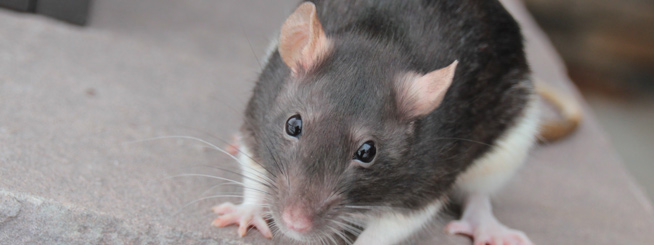The only good thing about having rats is your home, is that they will often deter mice from entering the property too. Well, that's until the rats have died in your home, of course. The decomposing bodies of these rodents will attract a wide range of other insects and animals - flies, mice, other rats, and more.

Rats will often prey on mice, if they are present in the same property. That's why the scent of rat urine or feces, and other pheromones, will often drive an infestation of mice away. Although both rodents are renowned for causing heaps of damage, the rat is a considerably worse rodent to have around.
Some people believe that rats and mice came from the same place originally, but mice evolved to be slightly smaller to get to the places that rats could not. This could be used to describe the number of similarities they have, and also what makes identifying them quite difficult to the untrained eye.
You will need to know which rodent you have to understand the right ways to get rid of them. You will need specifically-sized and built rat traps to kill rats, whereas mice will need smaller mouse traps. If you use a rat trap to trap a mouse, there's a good chance it won't work because the mouse is too small. It will easily scamper away before the trap has a chance to work. On the other hand, if you lay mouse traps down and you have a rat ,you might find that the smaller trap doesn't have enough power or force to do the job properly. This will leave you with a "finishing job" on your hands.
Mice are often smaller than rats, and they have softer, lighter fur too. Rats have longer, thicker tails, and rat droppings tend to be more spindle or capsule shaped, depending on the breed of rat, whereas mouse fees are generally more rod-shaped. Mice will only eat 0.1 grams of food per day, whereas a rat will consume ten times that - one gram of food per day. If food is disappearing at a staggering rate, you might have an infestation of rats on your hands.
House mice tend to prefer material that is stored as their nesting / home points. This will mean places such as wooden or cardboard boxes. Rats will prefer different spaces in your home or commercial property. The Norway rat, for example, is a burrowing rat, whereas the “roof rat” prefers trees, as well as your attic and within the walls of your home.
Make sure you know what rodent you have in your home before you take any action. Using the wrong traps will only lead to unpleasant things. Never, ever use poison.
Go back to the Rats in the Attic home page.
Do rats kill mice?

Rats and mice are two creatures that are commonly mistaken for one another, and on the surface, it is easy to see why. They both look roughly the same shape, have similar looking fur, and appear to live in the same manner. But in reality, rats and mice are very different.
One of the main distinguishing features is their size. Mice, especially the common house mouse, are often quite a lot smaller than the common Norway rat and are not as heavy. For example, Norway rat bodies can be anywhere in the region of 9 inches to 11 inches long, with a tail as long as 9 inches, and weighing up to 1.4 lbs. By comparison, mice have far shorter bodies and tails of just 3 inches to 4 inches each and weigh less than 0.2 lbs.
As a result, all features of a rat are larger than their counterparts on mice, but there are other differences, too. Rat tails tend to be much thicker than those of mice, and they also have separate behaviors. For example, mice are more inquisitive and curious than rats, and rats tend to be more cautious, which is why it can be very tricky to trap a rat.
They do share some similarities, however. Both rats and mice breed very quickly by having large litters, and they have similar eating habits. In fact, they will both eat just about anything they can get their claws on. They also share the need to constantly gnaw on rough surfaces to keep their ever-growing incisor teeth from becoming too large.
But despite often being lumped into the same category together, rats and mice do not necessarily get on well together. Experiments have shown that mice actually become more stressed when placed in close proximity to rats, which can affect their survivability and even reproduction. Even rat urine or feces can be enough to make a mouse anxious.
And yes, rats do actually hunt and kill mice, which is called muricide. It is quite a common occurrence, with studies of rats finding that as many as 70% of them in the wild will kill mice. It is a quick process due to the rat’s sheer strength and size, with one bite often enough to kill the mouse, usually targeted at the head, neck, or upper back. However, rats do not necessarily eat the mouse they killed, or certainly at least not all of it. That being said, muricide takes place more often than not when the rat is hungry.
It is possible though for rats and mice to coexist without the former killing the latter. If a rat is brought up in captivity alongside a mouse it is much less likely to kill mice at all when they reach maturity.








